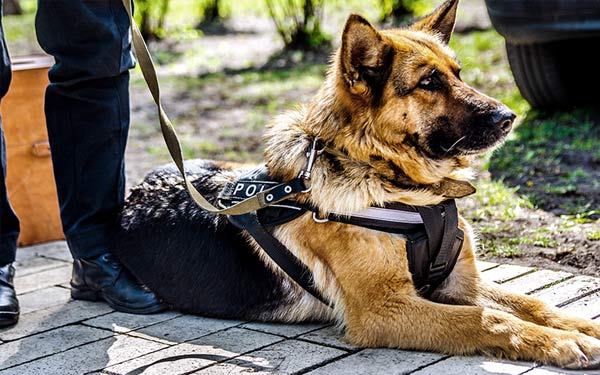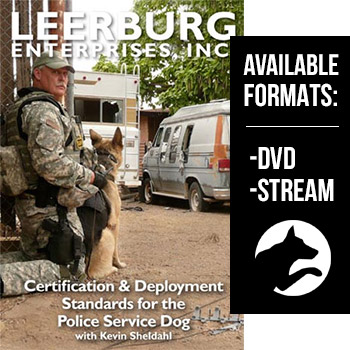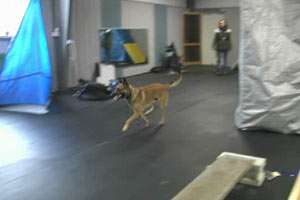Use of Force with a Patrol K-9 and the Importance of Verbal Release

Foreword by Ed Frawley
I met Kevin Sheldahl in 1984 at a police K-9 school in Kansas. We have been good friends ever since. Kevin is a retired police K-9 handler. He became a K-9 Instructor and an International Police Dog Judge. Kevin's company K-9 Services runs 6-week police K-9 courses in which police officers learn how to become new K-9 handlers. To date, he has run 70 6-week courses and trained over 1,200 K-9 handlers. I don't know of another dog trainer that has Kevin's experience and knowledge of police service dogs training.
I see on numerous Facebook pages, posts, and various blogs and websites an interesting and disturbing trend. It really boils down to a couple of misconceptions among the inexperienced/un-experienced who currently advertise intensely about the work of police dogs to drum up business.
First is the misconceptions about grip. The inexperienced trainer talks excesively about grip like a sport enthusiast does. In sport, the dog that grips the material—whether sleeve or suit—is highly regarded. Even sports where the grip is not directly graded like IGP, the value of the individual dog's performance is still eveluated on grips to a large extent.
The second area is the use of the Tactical Release as a tactic. This skill is often totally misunderstood. Give it a cool name, call it safe, and you can rely on it totally seems to be the theme. That and the inability to perform an effective verbal release on a dog resulting in using a choke off as a 'tactical release' defies integrity.
Let's start with the grip. I will go back to a real visionary in police canine in the United States, Sgt. Donn Yarnall LAPD (RIP). He spoke extensively about proper character for a police dog. In discussions about this, the primary fighting drive for a patrol dog should be combat drive (or often refered to as fighting instinct or fight drive). This drive, when very high, often produced 3/4 grips. In looking at these dogs, their barking was broken, serious, and continous—not rhythmic.
There is the assumption that big, to-the-ear grips on equipment translate to big, to-the-ear grips on the street. Here is where the sport model interferes with reality.
The grip on equipment is highly influenced by prey drives and may not translate to street encounters. In fact, many of these big gripping dogs tear clothing off their suspect, failing to grip the bad guy within. Read about suit work. I see video after video of decoys being brought to the ground and rolling around, crawling away from the dog which is being helped to grip deeply and show a full grip. This is exclusively prey-oriented training. The worst part is, it does not translate to grips on the road. We want to see dogs that fight when fought and engage the combatant with strong grips. Note that the depth of the grip is not a huge deal. A 1/2 grip is better and is fine as sometimes the activity of the combatant is such that a dog is only able to get a bit of a bite.
If the dog is trained diligently to grip full, and work fully in prey in combat, it may simply fail altogether. Combat is not a suit. It is not a floppy decoy in a custom suit crawling along the ground. No human chooses to crawl on all fours to fight a dog. Only decoys in custom suits with their initials do this. Why? To make dogs look good and make handlers feel good. My friend Donn would be appalled. The idea of grips is a result of sports. Now I will say, I really enjoy sports, and I work my ass off to have fine full grips with my sport dog. I'm looking forward to the evaluation of his grip during trials. But, I also know that this is not where my efforts would be with my street dog. Don't confuse sport evaluations with street work. They have drifted far apart in the last 40 years! Yet, the uneducated, pseudo K-9 trainer has no other education than to seek out the sport standard!
The tactical release is something I have wrote about extensively. In the US, it is a gag release of a grip. The handler invokes a gag with the use of a chain collar placed high under the dog's jaw and compressed with one of a couple techniques. Alternatively, a tool can be use to insert behind a dog's molars and placed on the back of the dog's tongue to create a gag reflex. This is not a break stick as used by pit fighters who pry their dogs off with a specially designed lever!
This is a very applicable technique when the arrest team deems it appropriate to close the gap and go hands on with the perp. This is in accordance with other arrest and control, defensive tactics taught in law enforcement. Yet, I am seeing this promoted as the ONLY technique for effecting a release of the suspect by the dog! This is entirely a wrong perspective. Often the promoter of such methodology uses "officer safety" as the reason such a inflexible technique. This will fail in the evaluation using Graham v. Conner! Often, officer safety is thrown about as a catch all to cover use of force. If you do this, expect it to fail in a civil action! Officer safety as a term means nothing to the courts! You MUST be able to articulate facts. Why, after a suspect has said, or acted in a manner that shows compliance, did you continue to administer force (aka allow the dog to continue biting the suspect)? Sorry, officer safety won't cover you.
The moment you can evaluate a suspect is compliant you must, I repeat, must remove force. This isn't a K-9 thing and canines don't get a pass on this. You must remove the instrument of force!
The lesson here is to have a good verbal release and be able to use it. No excuses!
Oh, I am sure I will get some hate mail over this...but, I am right and if your trainer/instructor says different, well they are speaking out of turn.
To make things worse, the idea that a verbal release is wrong and not tactically sound flies in the face of good tactics. The dog should never drive your tactics, never. You must be able to manipulate your dog under all conditions to maintain safety of the search/arrest team and handler. Period! If you argue this, you don't have a clue about the law and about tactics.
Change my mind!









Ask Cindy.